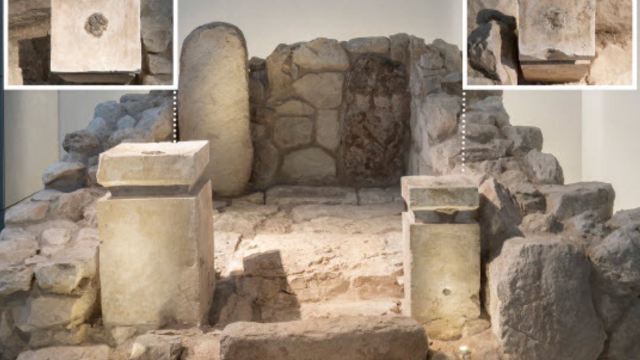Archaeologists in Israel have detected traces of cannabis on a 2,700-year-old altar found in an ancient Jewish shrine. The finding suggests ancient Israelites used mind-altering substances during religious ceremonies, in what is an unprecedented discovery for the region.
Ancient Israelites burned cannabis mixed with animal dung on altars during ritual ceremonies, according to new research published in Tel Aviv: Journal of the Institute of Archaeology of Tel Aviv University. By adding the animal dung, the worshippers were able to burn the cannabis at mild temperatures.
The altar bearing traces of cannabis residue was found back in the 1960s at Israel’s Tel Arad archaeological site. A second altar found at the same site yielded traces of frankincense, which was also intermixed with animal excrement. The altars were located at the entrance of a Judahite shrine dating back to the Iron Age. The limestone altars, which are kept at the Israel Museum in Jerusalem, were in use from around 760 BCE to 715 BCE.

With the scent of burning cannabis, incense, and animal dung wafting through the air, and with worshippers getting high off the fumes, we’re suddenly transported to an 8th-century BCE ceremony in the ancient kingdom of Judah. And indeed, the authors of the new paper, led by Eran Arie from The Israel Museum in Jerusalem, say the cannabis was very likely used to induce an altered state of consciousness.
“It seems feasible to suggest that the use of cannabis on the Arad altar had a deliberate psychoactive role,” wrote the authors in the study. “Cannabis odours are not appealing, and do not justify bringing the inflorescences from afar.”
Well, the suggestion that the scent of cannabis is “not appealing” is certainly in the nose of the beholder, but it does seem unlikely that the stuff was imported exclusively as an aromatic. No evidence of cannabis pollen or seeds has ever been found dating back to this time and place, which suggests the substance, likely in the form of resin (i.e. hashish), was brought from abroad. What’s more, the researchers detected sufficient traces of the two key psychoactive ingredients: tetrahydrocannabinol (THC) and cannabidiol (CBD).
At the time of the discovery, archaeologists noticed the black splotches on the limestone surfaces, but analysis of this residue led to inconclusive results. A new chemical analysis, conducted by researchers at Israel’s Hebrew University and Technion Institute, yielded traces of THC and CBD at sufficient amounts required to bring about an altered mental state. This is now the earliest evidence of cannabis use in the Judahite region and the first evidence of psychoactive substance use in the region.
“The presence of cannabis at Arad testifies to the use of mind-altering substances as part of cultic rituals in Judah,” wrote the authors, which included Dvory Namdar from the Volcani Institute and Baruch Rosen, an independent researcher. “The plants detected in this study can serve as an extra-biblical source in identifying the incense used in cultic practices not only at Arad but also those elsewhere in Judah, including Jerusalem.”
Back in 2019, researchers described the discovery of a 1,000-year-old psychedelic drug kit found in the Bolivian Andes. The kit, which likely belonged to a shaman, contained traces of several psychoactive substances, including cocaine and the active ingredients found in ayahuasca.
